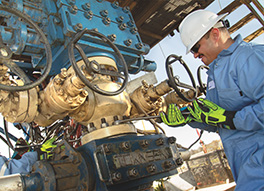Maintenance and General Services

Maintenance is typically thought of as a necessary cost of doing business but top quartile leaders challenge every department to be a profit center.
How does Maintenance affect profitability?
Company profitability is driven by production output minus the unit cost of that production. The negative cost drivers due to Maintenance are:
- Restricted production output due to excessive scheduled and unscheduled downtime
- Poor equipment performance causing reduced labour output per hour
- Excessive direct cost of maintenance execution due to poor planning, scheduling and job cost control techniques
- A failure to identify and control “job cost critical path”
The above should be evaluated annually and eliminated.
A KPI Specialist can help your team evaluate these factors and tailor a program specific to your organizations’ goals.
A common problem: When internal change agents recommend change, the resistance to change is high and therefore the probability of success is low.
**Third parties are best positioned to implement significant, lasting change of fundamental practices
-
Predictive Maintenance
Predictive Maintenance (PdM) involves efforts to determine deterioration of equipment and components prior to significant degradation and subsequent failure.
This attempt allows problems to be rectified before the equipment stops working altogether or causes further damage of related components, leading to greater downtime of the equipment for repairs or replacement. -

Preventative Maintenance
Preventative Maintenance (PM) is a system of scheduled inspections and predetermined maintenance performed on facility equipment.
This may include general upkeep of equipment through the replacement of consumable components, such as lubrication and oil or replacement of parts subject to wear and tear.
The primary goal of PM is to mitigate the negative effects caused by unplanned, reactive maintenance and avoid untimely and expensive emergency repairs.
